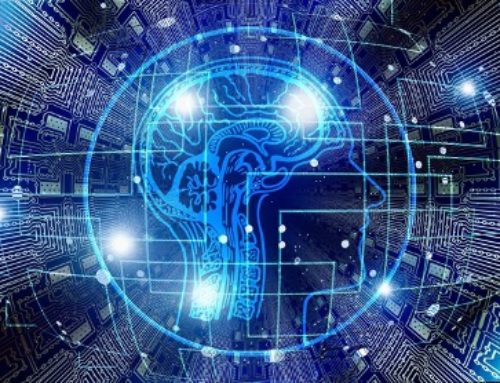Statistics vs Machine Learning: Unveiling the Distinctions and Commonalities
Key Takeaways:
- Statistics and Machine Learning are not the same. While they share certain underpinnings, their goals and methodologies diverge significantly.
- Machine Learning is primarily concerned with making the most accurate predictions possible, often at the expense of interpretability.
- Statistics, on the other hand, focuses on inference and understanding the relationships between variables. It values interpretability and robustness of models.
- Machine Learning is built on Statistics, but incorporates techniques from various other fields such as optimization, matrix algebra, calculus, and computer science.
- Deciding which approach to use depends largely on the problem at hand. Machine Learning excels in prediction tasks, while Statistics is ideal for inference and understanding relationships between variables.
Introduction
The ongoing debate of statistics vs machine learning is a prevalent topic in the realm of data science. Despite their apparent similarities, it’s crucial to understand that they are not interchangeable. The comparison between these two fields is much like comparing architecture with sand-castle construction – they share a common foundation but diverge significantly in their objectives, methodologies, and applications.
A Brief History of Machine Learning
Contrary to popular belief, machine learning is not a new field. It has been around for several decades but was initially shunned due to its hefty computational requirements and the limitations of computing power at the time. The recent resurgence of machine learning is primarily driven by the data boom, which has provided a wealth of information for machine learning algorithms to learn from.
The Essence of the Debate: Purpose and Accuracy
One of the most frequent assertions in the statistics vs machine learning discussion is that the primary difference between the two lies in their objectives. The assertion is that machine learning models aim to make the most accurate predictions possible, while statistical models are designed for inference about the relationships between variables.
However, this distinction, while technically accurate, oversimplifies the complexities of both fields. It’s important to recognize that statistics and statistical models are not synonymous. Statistics is the mathematical study of data, while a statistical model is a model for the data used either for inference or prediction.
Delving Deeper: Predictive vs Inferential Modeling
Many statistical models can make predictions, but their strength lies not in predictive accuracy but in their ability to infer relationships within data. Likewise, machine learning models offer varying levels of interpretability, but they generally prioritize predictive power over interpretability.
Let’s consider the example of linear regression. Both statistical modeling and machine learning utilize linear regression, but their approaches and objectives differ. For instance, in machine learning, we ‘train’ a model using a subset of our data and evaluate its performance on unseen ‘test’ data. The goal is to achieve the best performance on this test set.
On the contrary, for a statistical model, we find a line that minimizes the mean squared error across all of the data, assuming a linear relationship with some random noise added, which is typically Gaussian in nature. Unlike machine learning, in statistical modeling, there is no concept of training or testing sets.
Understanding the Difference
Consider the scenario where we are working with sensor data. If we want to prove that a sensor responds to a certain kind of stimuli, we would use a statistical model to determine whether the signal response is statistically significant. We would aim to understand this relationship and test for its repeatability so that we can accurately characterize the sensor response and make inferences based on this data.
However, if our goal is to predict the response of a newly characterized sensor based on an array of 20 different sensors, we would likely employ a machine learning model. This model would not be particularly interpretable, but as long as it can make accurate predictions, it serves its purpose.
Machine Learning’s Foundations in Statistics
In many ways, machine learning is built upon a statistical framework. It uses data, and data must be described using a statistical framework. However, machine learning also draws upon various other fields of mathematics and computer science. For example, machine learning theory comes from fields like mathematics & statistics, machine learning algorithms stem from fields like optimization, matrix algebra, calculus, and machine learning implementations are rooted in computer science & engineering concepts.
Statistical Learning Theory
Machine learning is based on statistical learning theory, which expands traditional statistics. It involves a set of data, denoted as S = {(xᵢ,yᵢ)}, where each data point is described by some other values we call features (x), and these features are mapped by a certain function to give us the value (y). The goal is to find the function that maps the x values to the y values.
To find this function, we use a loss function to evaluate how each proposed function performs by looking at the value of its expected risk over all of the data. The function that minimizes this empirical risk is selected as the final model. This approach introduces the problem of overfitting and justifies the need for having a training and test set when performing machine learning.
Concluding Thoughts
In the realm of statistics vs machine learning, the choice between the two largely depends on the problem at hand. Machine learning shines in prediction tasks, while statistics is ideal for inference and understanding relationships between variables. However, it’s crucial to remember that machine learning wouldn’t exist without statistics, and both disciplines have an essential role to play in the field of data science.
Further Reading
If you’re interested in delving deeper into this topic, there are numerous resources available:
- For a deeper understanding of statistical learning theory, check out these lecture courses: LINK
- For a more rigorous exploration of probability spaces, these sources provide a comprehensive overview:
- Introduction to Probability http://users.jyu.fi/~miparvia/Opetus/Stokastiikka/introduction-probability.pdf
- An Introduction to Statistical Theory and its Applications https://people.smp.uq.edu.au/DirkKroese/asitp.pdf
Thank you for reading!

Are you interested in AI but don’t know where to start? Want to understand the role of an AI Architect? Check out our page and watch our informative video.





